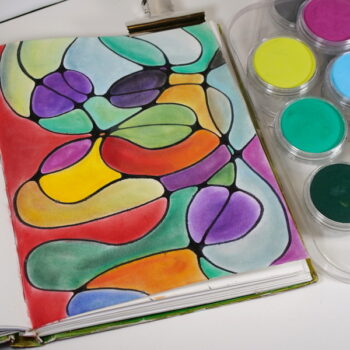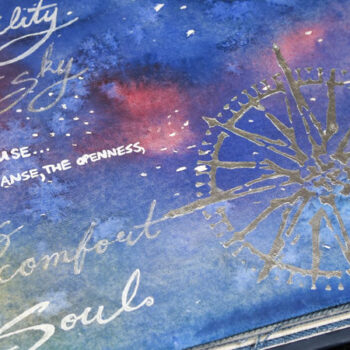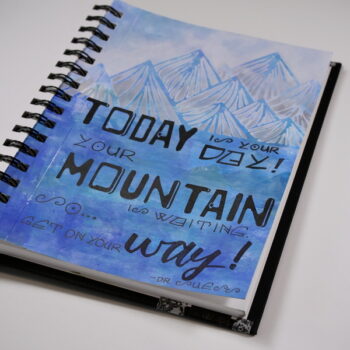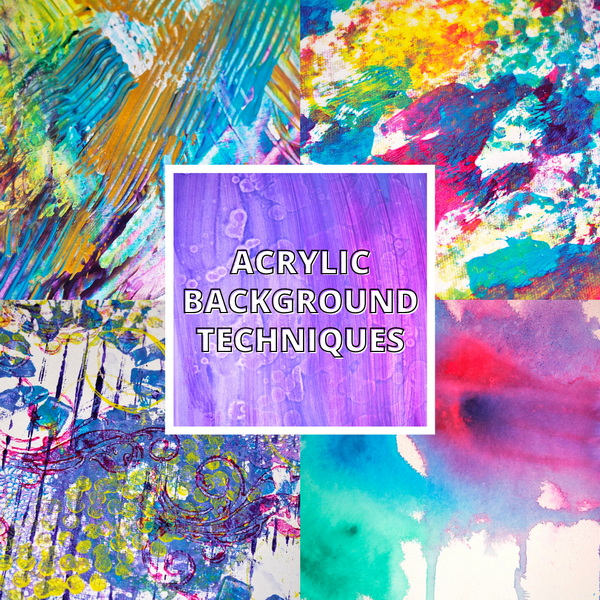
Intimidated by the Blank Page? 5 Acrylic Background Techniques for the Art Journal
Do you ever struggle with staring at a blank page? One of the hardest parts of art journaling can be knowing where to start. Today I will be sharing 5 acrylic background techniques to break up those blank pages and help you create with confidence.
Hop-A-Long Studio is reader-supported. When you buy through links on our site, we may earn an affiliate commission at no cost to you. Learn more.
Acrylic Background Techniques
Before you start, I suggest adding a layer of gesso to the surface before adding paint. I find that it strengthens the paper, and you will get better and more even paint coverage when adding acrylic paint on top of gesso.
Brayer Techniques with Acrylic Paint
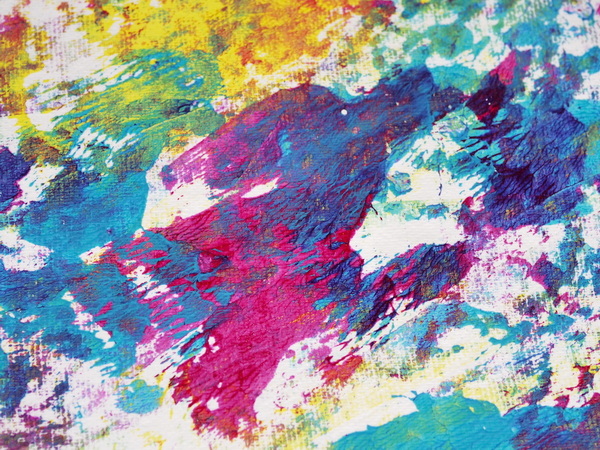
Adding acrylic paint with a brayer is an easy way to add color and texture to your page. Apply your paint to a palette and roll the brayer through the paint. I like to tap and gently roll the brayer to get the paint to evenly cover the brayer’s surface.
Roll the brayer across your art journal surface. You can use long or short strokes to add different coverage and marks to your surface.
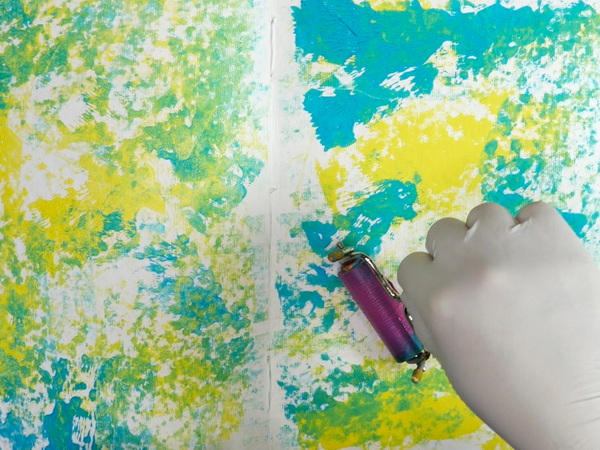
When using the brayer, go in a variety of directions on your page. By varying your strokes, changing direction, and adding many layers, this can give you a beautiful acrylic background as the base for your art journal project.
Acrylic Backgrounds Using a Brush
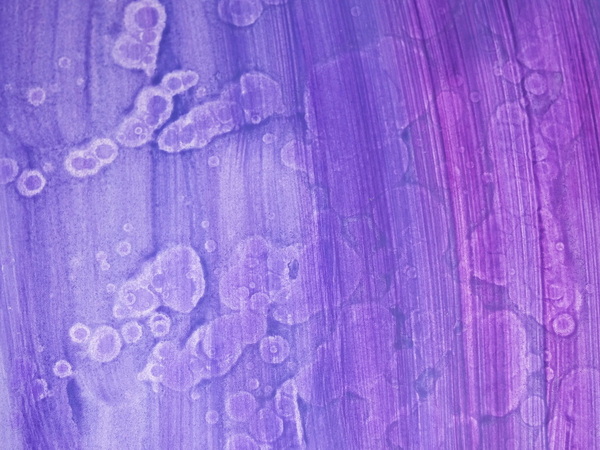
One of the simplest acrylic background techniques is using a brush and acrylic paint to cover the surface. By thinning your paint with water, this will create a thin and even layer that works as a great base for any art journaling project. It’s a very basic way to add color to your page very quickly.
A Variation of this Technique
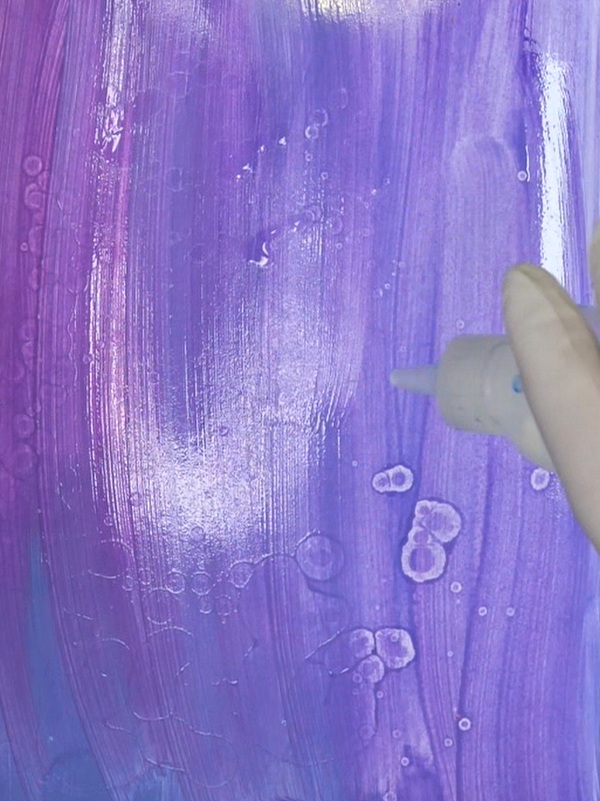
When creating acrylic backgrounds using this technique, I don’t just add paint and water. I also like to add 99% isopropyl alcohol. The key to this technique is to make sure that both the paint and water on the surface are still wet. Use a pipette to drop alcohol onto the surface. The alcohol will move and lighten the paint and create texture on the surface in a very random way.
I often use this technique as the first layer of most of my canvas paintings. If you would be interested in seeing my article on journal, birch board and canvas prep, click here.
Paint Swiping
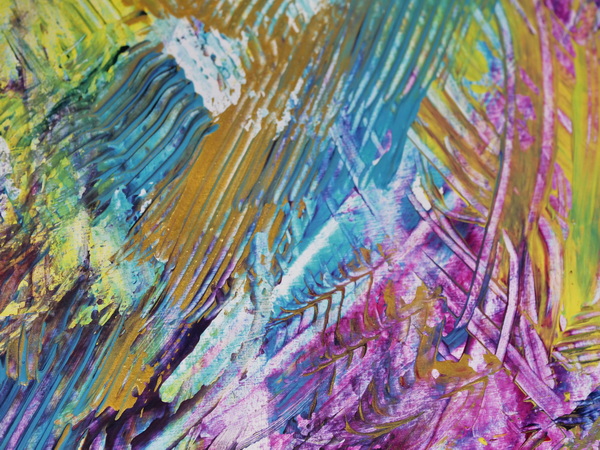
If you want to create a loose and beautiful acrylic layer to your art journal page, try swiping paint onto the surface. I love how random and intuitive this technique can be and I often use it to loosen up in my painting practice.
Use a piece of cardboard, cardstock, palette knife, silicone mark making tool, an old gift card or any other found object that will not bend as you apply paint. Pick up a small amount of paint from your palette with your paint applicator and swipe it across your surface.
By varying the size and shape of your tool, this can give you a lot of different textures on your journal page. Every tool makes a different mark and will apply paint in a unique way.

Use a little bit of paint at a time. You can end up with thick acrylic paint that won’t dry evenly if you apply the paint too heavily. I also find with too many thick, globby layers of paint that my art journal pages tend to stick together.
Stamping with Found Objects
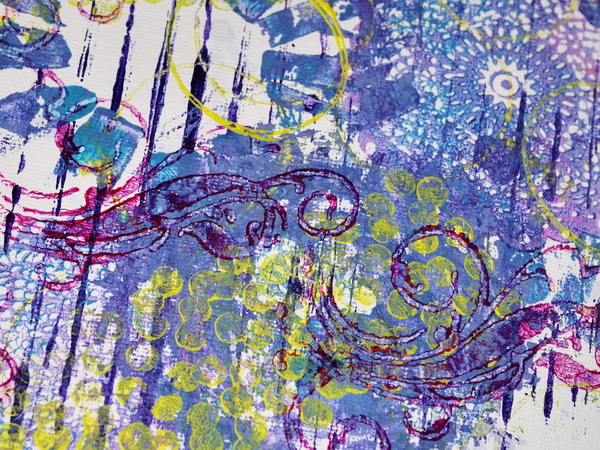
If you want to leave white spaces on your page, stamping with found objects is a fun way to add color and texture without covering the entire surface.
You can use cardboard, toilet paper rolls, q tips, pencil erasers and many other household items for stamping. I also have a large collection of rubber stamps that I use for stamping in my journals.
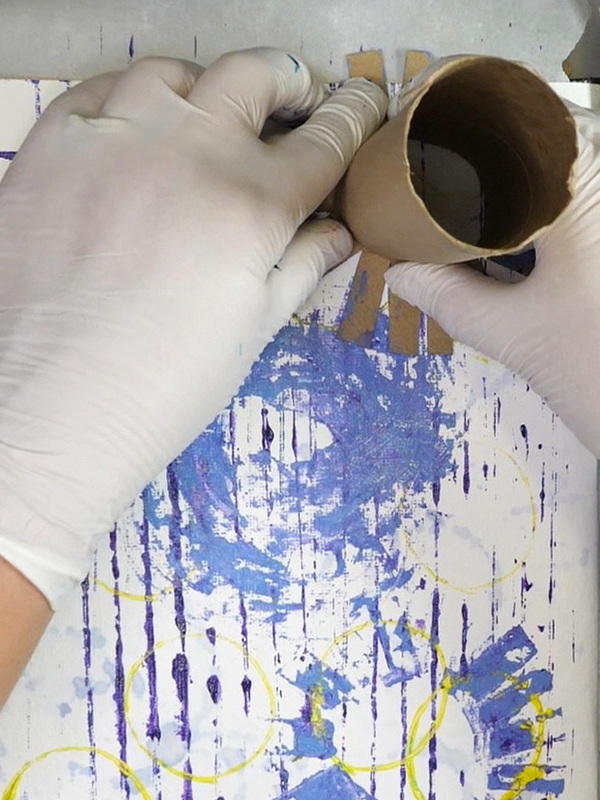
When using rubber stamps, make sure to clean them right after you finish your stamping. This will prevent the acrylic paint from drying on them and ruining your stamps.
Depending on the tool, you can choose to add paint to your stamp with a brayer or dip your found object into the paint. Then stamp your object onto the surface.
You can add more acrylic paint after each stamp, but my favorite way to use this technique is to stamp the second and third values of the image.
Using High Flow Paint
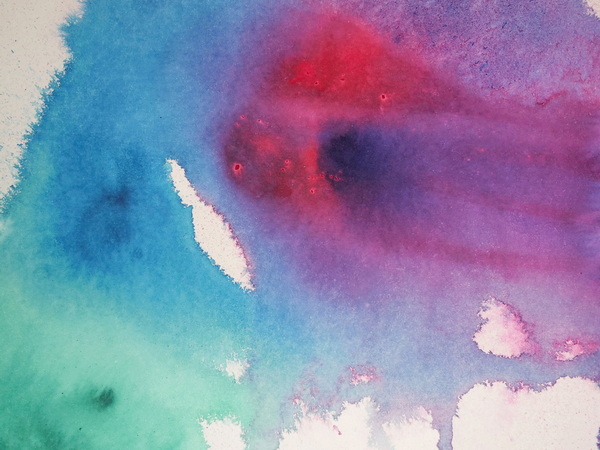
If you happen to have high flow paints or acrylic inks in your art collection, these acrylic paints are ideal for beautiful backgrounds. For best results, use a very smooth journal surface or gesso your paper before adding paint.
Add a few drops of high flow acrylic paint to the surface. Using a spray bottle, add water to the paint. This will cause the paint to flow and move across the surface. Add more colors of high flow acrylics while the paint is still wet. This lets the acrylic paint meld and flow onto the surface in a very loose and beautiful way.

As high flow acrylic paint is highly pigmented, only add a few drops at a time. Once you add water, the paint will dilute and flow. Tilt the page and let some of the paint drip off if you want to get full coverage on your page.
Finding Rest in the Process
I love starting my art journal pages with one of these acrylic background techniques. It’s a very restful way to start a project, especially if you’re not sure where you want the page to end up. By using one of these techniques to get rid of the blank page, it often inspires my creativity. Instead of feeling stuck, I know which direction I want the page to go.
Don’t overthink these techniques. These are meant to be relaxing and imperfect. Give yourself the space to try something new and experiment. You never know what you might come up with!
If you are worried about getting the other pages in your art journal messy, or if your pages tend to stick together, try using a silicone sheet or parchment paper behind the page. This will help contain the paint and will leave the other pages clean for your next project.
Any Questions?
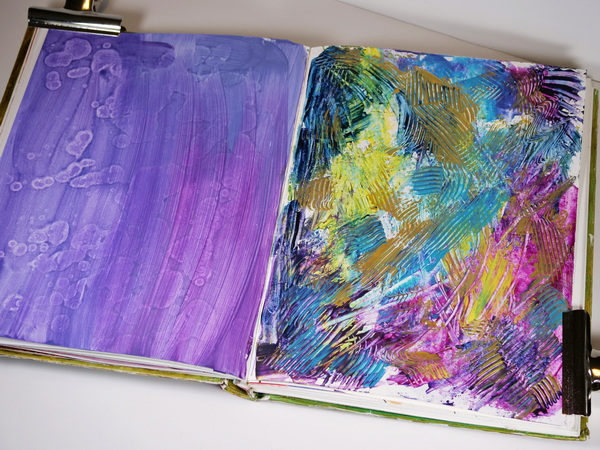
Do you have any questions about the techniques that I have shared today? I really hope that you give these a try! Take time to breathe, to experiment and see what might come out of your creative play. You might come across something incredible that you haven’t thought of before. If you have any questions, please comment below. I would love to start a conversation with you!
Project Supply List
Dina Wakley Blue Media Journal
Dylusions Square Standard Journal
Pebeo Studio Acrylics Turquoise Blue, Oriental Violet, Lemon Cadmium Yellow Hue, Iridescent Gold
Cheep Paint Magenta
Amsterdam Standard Series Acrylic Paints: Prussian Blue Phthalo, Grayish Blue
Golden High Flow Acrylics: Indigo (Anthraquinone), Quinacridone Red, Turquois (Phthalo), Phthalo Green (Blue Shade)
Brayer
Ranger Inkssentials Craft Scraper
Used Gift Card
Cardboard
Princeton Catalyst Texture Tool
Simply Simmons Acrylic Brush Oval Wash 1”
Cardboard
Paper Towel Roll
Foam Stamp



